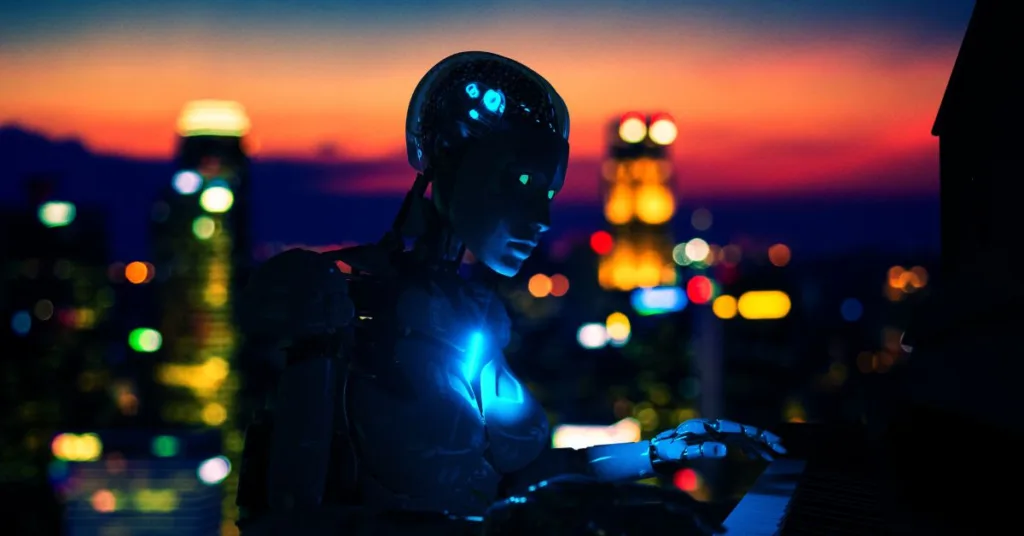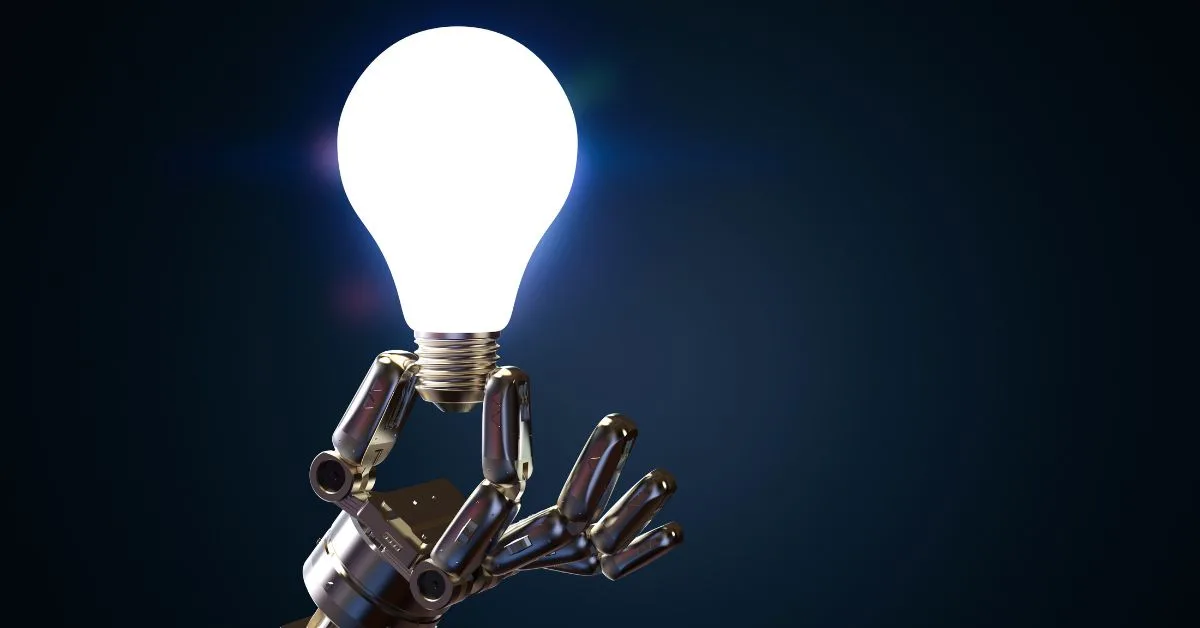Artificial intelligence (AI) has made incredible advancements in recent years, with systems like DALL-E 3 and Midjourney creating strikingly realistic images.
But while AI-generated art can seem authentic at first glance, tells exist that can help determine if an image was made by human or machine.
In this complete guide, we break down 7 key techniques you can use to spot AI art, along with tips on additional detection methods.
How to Tell if Art is AI-Generated
AI image generation tools utilize neural networks to create original artwork based on text prompts. The results can be surprisingly convincing, fooling even art experts on occasion.
But AI systems still have limitations that introduce subtle imperfections not found in human-made art. Spotting these inconsistencies and anomalies is key to identifying machine-generated images.
Below we cover multiple approaches to analyze an image, from scanning fine details to catching logical errors. Used together, these techniques offer strong evidence on whether art is AI-created or the product of human imagination and effort.
Equipping yourself to make this distinction is worthwhile as AI art continues advancing. Read on for a full guide on unmasking machine-made images.

1. Zoom In Looking for Inconsistencies
AI art often appears flawless when viewed from a normal perspective. But inconsistencies emerge upon magnifying and inspecting small details.
Ears, eyes, hair, and other facial features may seem accurate at a glance. But zooming in 400-500% can reveal deformations and patterns not found naturally, exposing the limitations of the AI system.
Accessories like glasses and earrings also commonly have unnatural shapes or positioning when magnified. And details of skin and textiles may lose coherence.
Scrutinizing the fine elements is one of the most reliable ways to catch AI slip-ups. If facial features and accessories check out upon zooming, it’s a good sign the art was made by human hands.
2. Check Image Source
When analyzing an image’s authenticity, tracing its origins can provide answers.
Conducting a reverse image search using tools like Google, TinEye and Yandex can connect an image to its initial online posting. Seeing if the image leads back to an AI art platform like Midjourney is a clear giveaway.
You can also browse comments on the image across the web looking for references to it being AI-created. Social media chatter can shed light on its legitimacy.
And confirming the identity of the artist behind the work, as well as their social media profiles and portfolio sites, helps authenticate it.
Tracing the source of a suspicious image takes some sleuthing but helps determine AI or human origins.
3. Analyze Body Proportions
Human anatomy requires careful study for an artist to depict accurately at different angles and poses. AI systems at this stage still struggle with getting body proportions right.
Hands are a common weak point. Outstretched hands may appear too small or too large for the body. Or hands can be inaccurately articulated with erroneous details becoming noticeable upon inspection.
Legs too can suffer proportional problems, with calves visibly too short or too long for a balanced human form. Feet may seem detached and poorly matched in size to the head area.
Getting heads, torsos and limbs to align can trouble AI generators. If proportions feel off, it’s likely the work of an algorithm rather than an artist diligently constructing anatomy.
4. Detect Odd Parts
Along with getting proportions wrong, AI systems can make more obvious blunders when trying to handle details.
Backgrounds are difficult for algorithms to render crisply, often appearing softly blurred or blotted while the main subject remains sharp. Unreadable text seen on objects like signs, apparel and papers is another sign the AI couldn’t convincingly construct written passages.
Accessories too prove tricky. A character may sport mismatched earrings, lack glasses they should wear, or have only one shoe without explanation. Or the style and color of an item doesn’t fit their outfit, defying logic.
Also watch for facial features like off-kilter ears and noses, floating hair strands, or colors that spill outside natural lines. Parts may seem convincingly “painted” on top of the image rather than seamlessly integrated.
Logical errors like these eg: 300, expose the fault lines behind AI image construction.
5. Employ Common Sense
One of the key weaknesses for current AI is a lack of common sense about lighting, shadows and other real-world conditions when generating scenes.
Notice if shadows bend across floors and walls in ways that don’t align naturally with presumed light sources. Or shadows may be oddly missing altogether.
Position of the sun relative to objects should also make visual sense. And weather visible through windows and environments doesn’t necessarily match figures and clothing depicted.
Logical flaws also pop up in details: floating food missing plates, extra phantom limbs, pets ignoring owners, repetitive elements cloned across images.
When scenes defy reasoning about what makes sense visually, it’s likely AI struggling to apply logic.
6. Use AI Detection Tools
Beyond manual inspection, you can enlist the help of online tools designed to analyze images and estimate the likelihood they were AI-generated.
Sites like Optic’s AI or Not, Illuminarty and Hive Moderation accepts uploads or links to images which they run through models assessing traits typical of AI art.
Key factors checked include amount of detail, coherence, color distribution, conforming to anatomy and physics, logical consistency, presence of frames/canvases, and image metadata.
These tools summarize overall scores on AI probability as well as highlight suspect traits. They offer a handy second opinion during analysis.
7. Watch for Overly Flawless Images
On the opposite end of detectable inconsistencies are images that seem suspiciously smooth and perfect.
Some AI generators like Midjourney have an idealistic quality, generating unnaturally consistent, symmetrical representations.
Faces and hair can appear too idealistic, with model-like appeal exceeding what’s typical in reality.
Skin may lack signs of aging, sun effects, freckles and expected flaws. Fabrics and textiles also tend toward unrealistic tidiness.
When an image clears the visual bar of being too flawless, it tips the scale toward artificial origins.
Read More: How Does AI Art Work: A Complete Guide
Conclusion
Telling AI art apart from human creations comes down to spotting inconsistencies, proportion issues, logical errors, and excessively polished results.
While some AI-generated art proves incredibly convincing at first glance, looking closer reveals signs of fabricated realities rather than scenes rooted in keen observation.
By thoroughly inspecting elements at the macro and micro level, tracing origins, applying reasoning, and noting any too-good-to-be-true appeal, you gather evidence separating machine-made images from visions conceived in the artist’s minds.
AI continues progressing rapidly, so it’s important to hone techniques for distinguishing artificial art whenever authenticity matters. But understanding current limitations also allows properly appreciating achievements pushing boundaries in computer creativity.
With manual analysis methods and AI-assisted tools both playing a role, uncovering an image’s provenance remains within reach. Stay vigilant in looking deeper and applying logic, and the human touch or algorithmic origins come clearly into focus.

